
Winning Projects
Excellence in Strategic or Master Planning – Winner
DUBA, BUDU, BARRA: Ten steps to a living river – The Parramatta River Masterplan.
The Parramatta Catchment Group
DUBA, BUDU, BARRA: Ten steps to a living river – The Parramatta River Masterplan is the culmination of years of collaboration with our many partners and the community. Robust science, collaboration, cultural sensitivity and community decision making are at the heart of this plan to ensure that we deliver measurable and sustainable outcomes for our living river and its communities.
The Parramatta River is arguably Australia’s most iconic waterway – and one which millions of people deeply connect with. Aboriginal people have had a close connection with the Parramatta River for thousands of years and we sincerely respect and acknowledge the continuing connection they have with the river and the land surrounding it.
The Parramatta River used to be swimmable. Following English colonisation, thousands of people would regularly gather around its shores or dive into its waters to participate in water-based events, learn how to swim or just cool off on a hot summer’s day. Sadly, by the 1950s, most of our river swimming spots were closed due to pollution from local industry, sewage and stormwater runoff.
Over the last 20 years, we have seen great improvements to the health of the river, with advancements in regulation, technology and community awareness. Wildlife has come back to the river and we are already swimming naturally at four sites along the river.
The Parramatta River is at the heart and soul of our region. The river’s shores are set for another period of change, with the burgeoning Greater Parramatta to Olympic Peninsula corridor now named the ‘Central River City’. Our scientific modelling shows that water quality can be improved even with predicted development but that additional management is needed to achieve this. The implementation of our ten-step plan will deliver the changes needed to do more for the river and its surrounds, to secure its future for generations to come.
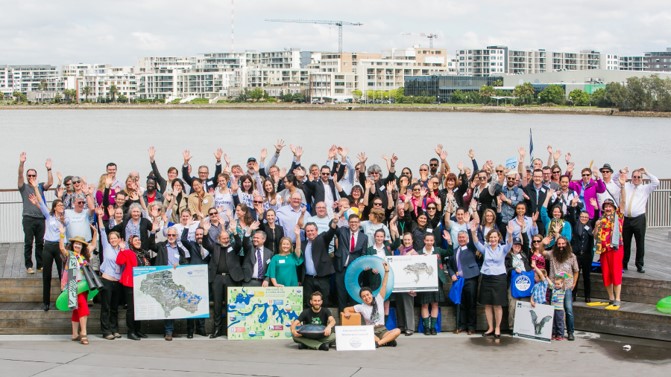
Excellence in Infrastructure – Winner
Waverley Cemetery – Coastal Walk Rehabilitation
Alluvium Consulting, Waverley Council, ASPECT Studios, Ducros Design, Hibernian Contracting
A significant section of the famous Coast Walk between Bondi to Coogee was destroyed at Waverley Cemetery by storms in 2016. The cliff face experienced a land slip, making a length of the busy path inaccessible and unsafe. The rectification works to restore the path, cliff face and protect the heritage assets of the historic cemetery included significant structural works that incorporated upgraded drainage infrastructure and stormwater treatment systems that drew on the coastal environment and ecology for inspiration in their design.
A tiered bioretention systems and wetlands provided stormwater treatment whilst also tying into the existing coastal landscape surrounds. Vegetation selection for the treatment systems drew on the sedges and coastal heath, recreating the ‘hanging swamps’ found as micro-environments on the NSW coast.
Design of the structural retaining wall was adjusted to integrate various landscape design and stormwater management and treatment features. The project has restored the cliff face, reconstructed the original Coast Walk along the famous coastline, providing a lookout and seating to take in the views and now safely captures and treats local runoff from the highly impervious surfaces of the site. Rectification works not only restored function to the popular Coast Walk, but provided many ecological, visual, and recreational benefits. The site now is a popular stopping point on the walk to soak in the contrast between heritage cemetery and natural local environment.
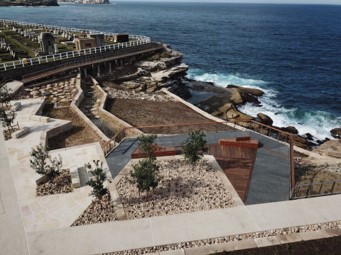
Excellence in Asset Management – Highly Commended
Blacktown City Council Water Sensitive Urban Design Audit Program – Blueprint
Blacktown City Council, E2 Design Lab
Blacktown City Council’s Water Sensitive Urban Design (WSUD) Audit Program is an established asset management framework and consists of:
- a WSUD Audit Program Blueprint Document (the subject of this award entry)
- standard planning requirements including positive and restrictive covenants
- WSUD Inspection and Maintenance Guidelines
- inspection fees for non-compliant WSUD systems
- a WSUD asset database
- a WSUD inspection and maintenance database and reporting system.
During the last five years more than 500 private properties have required the construction of on-lot Water Sensitive Urban Design (WSUD) treatment measures to fulfil the requirements of the Blacktown City Council Development Control Plan (DCP) Part J (Water Sensitive Urban Design and Integrated Water Management). Blacktown is the second largest municipality in Sydney, and one of the fastest growing with development leading to a significant increase in the number of WSUD assets being installed in the future. As a result, it was important that Council review current practices and identify gaps that needed to be addressed to effectively deliver and maintain WSUD assets across the municipality.
In 2012, Council created its first WSUD Audit Program Framework document. This led to the creation of a WSUD policy requiring stormwater runoff management at the point of discharge on all private lots, and subsequently a proposal to develop processes to assist with ongoing WSUD asset management. Since then, there has been a significant evolution of Council’s development controls, processes and activities.
The Blacktown City Council Water Sensitive Urban Design Audit Program – Blueprint document “the Blueprint” was developed to give a review of on-lot WSUD asset management systems and internal processes, identify issues and make recommendations for improvements. The Blueprint is a companion document to the Water Sensitive Urban Design (WSUD) Inspection and Maintenance Guidelines. The objectives of the Blueprint document are to:
- provide an overview of Council practices and identify where gaps exist in relation to ongoing management of WSUD assets
- enable greater compliance with Part J of the Blacktown DCP
- ensure Council delivers on its responsibility for regulating the environmental impact development has on receiving waters
- identify options for Council to address challenges with WSUD asset inspections, maintenance and reporting requirements
- review and provide recommendations regarding online asset management systems.
An important aspect of the Blueprint was to create a comprehensive and best practice document that other NSW councils could amend to create their own WSUD Audit Program.
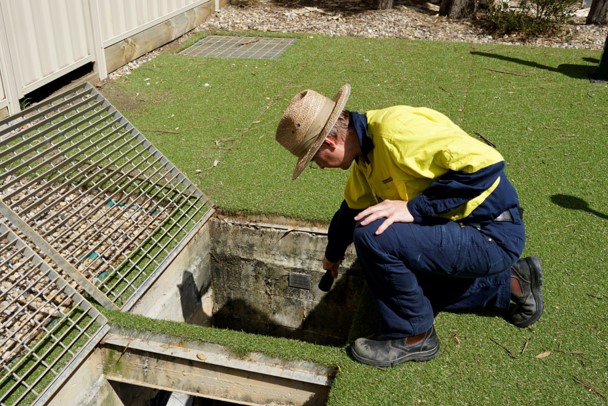
Excellence in Asset Management – Winner
Knowledge, Integration and Commitment – How the City of Sydney and Optimal Stormwater have massively enhanced stormwater asset management to protect one of Australia’s greatest jewels
Optimal Stormwater, City of Sydney
City of Sydney Council are one of the primary custodians of the world’s most iconic waterways – Sydney Harbour. They have a municipality that encompasses a thriving city. Its residents expect a high quality harbour to swim in, boat on, fish in, and catch a ferry cruise around. With large impervious areas within the LGA, stormwater runoff is high, and the volume of people and pollution makes stormwater the most important contributor to harbour health, and one of their biggest challenges.
In the past 2 years, City of Sydney has dedicated significant funding and resources to massively upgrade its stormwater management practices, to meet its environmental commitments.
Optimal Stormwater was a logical partner to assist them with GPT Auditing and MUSIC modelling, but the project became so much more than that.
There were knowledge gaps, funding problems, inaccurate information on just about everything, and a lack of understanding and integration between the internal Council departments to get the best holistic outcomes. Council needed a champion, and the found two: Peter Garland and Chris Miller.
They pulled in Murray Powell from Optimal and together we got to work:
* recreated the MUSIC model from scratch
* completed a GPT audit that started at 45 and ended at 65 GPTs, including new and private devices
* had an audit of the City’s raingardens done, 245 in total
* used accurate GPT and raingarden information to get realistic MUSIC modelling water quality outcomes
* Reviewed the cleaning contract, and wrote site specific cleaning specs, inspection and reporting specifications, and then trained the cleaning contractor in regards to doing their job correctly
* Optimal operates their 23 stormwater harvesting schemes so this information could be put into the modelling now as well
* Council engaged Marine Expert to review the ecology at its stormwater outlets
* the GPT Audit outcomes proved there was a lot to do, and a significant funding commitment required to do it.
* The GPT Audit 3 hour presentation with all internal stakeholder managers there, was absolutely outstanding and opened everyone’s eyes to the size and scope of the challenge ahead
* The capacity building in that 3 hours was huge, and out of that came a commitment to implement more than $2M in rectification works recommended
* But City of Sydney went further, they decided to allocate $5M over the next 10 years, to further innovation and upgrades. Cleaning, new devices, stormwater harvesting, modelling, raingardens, ecological research, internal integration, asset database upgrades and reporting are all additional to this $5M.
* This significant funding commitment will see upgrading and maintenance of these important stormwater treatment assets at a level never seen before in Sydney.
City of Sydney, with significant help from Optimal Stormwater, are setting a new benchmark in how to integrate all facets of stormwater management, and then backing it up with a long term funding commitment to make it happen. This is real. This is happening now. And this is to protect the our aquatic jewel.
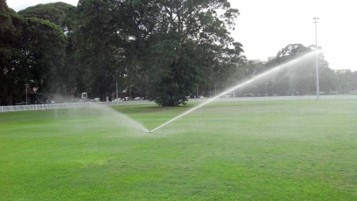
Excellence in Research and Innovation – Winner
Development and Application of the Urban Streamflow Impact Assessment (USIA)
Streamology, CT Environmental, Sydney Water, University of Melbourne
Until now, there was no formal method to quantify the impacts of urbanisation on the social, ecological and geomorphic values provided by streams. Based on more than a decade of research The USIA method was developed to explicitly link the severity of impacts to stream values with development scenarios and their stormwater runoff and streamflow regimes. The USIA method leads a team through the identification of social, ecological and geomorphic values, and by incorporating modelling provides hydrologic metrics that produce a risk matrix of impacts to values (‘traffic light matrix’). This enables development scenarios to be optimised and the Best Practice Stormwater measures and Water Sensitive Urban Design options to be considered. Key outputs for planners, engineers and developers of stormwater or wastewater treatment plants is the list of tailored metrics that provide specific flow targets to inform planning and design, including wastewater treatment plant outflows. Ultimately USIA demonstrates ‘what flows to take out’ and ‘what is lost if you don’t’. The method can be applied across urbanising and urban catchments to inform controls on urban streamflows, planning, drainage design, cost-benefit analyses and stream management. USIA fills a long-running gap in knowledge for urban planning that maintains liveability through nature.
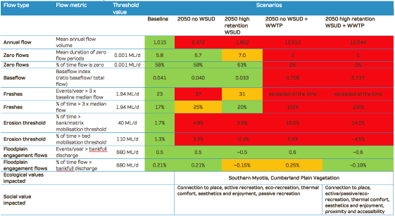
Excellence in Policy and Education – Winner
2019 ACT Government Municipal Infrastructure Standard (MIS) and Technical Specifications (MITS) for WSUD Infrastructure
Cardno ACT/NSW, ACT Government Transport Canberra City Services Infrastructure Planning City Operations
The ACT Government decided to adopt the Austroads Guides, and to issue a revised series of documents to reflect this development in standards and specifications for practice in the ACT, based on the Austroads Guides. This decision was made on the back of an agreement by all road authorities to adopt the Austroads Guides as the primary technical reference, together with the relevant Australian and New Zealand Standards. Whilst the principles and general guidance in the Austroads Guides were accepted, the standards and specifications needed to be updated to make them relevant to the ACT.
The purpose of the 2019 ACT stormwater standard and specifications was to satisfy the ACT Government’s preferences and requirements first and foremost, and secondly to meet industry requirements for clear guidance from a technical perspective.
The primary aim of the 2019 update of the ACT stormwater standard was to develop and incorporate new and innovative design standards for Water Sensitive Urban Design (WSUD) infrastructure into the standard and to update the standard to reflect the 2016/2019 revision of Australian Rainfall and Runoff.
The primary aim of the 2019 standard specifications for WSUD infrastructure was to develop specifications for ponds, wetlands, GPTs and bioretention systems.
An additional aim of the 2019 standard and specifications was to bring them in line with the Austroads series of Guides for provision and management of road and transport infrastructure, as it offers a level of consistency across all jurisdictions in Australia and New Zealand.
The ACT stormwater standard comprises a document and a set of drawings. The document was updated to achieve stormwater drainage systems design and documentation that meet the ACT Government’s objectives, which are based on a set of holistic inter-related principles for effective stormwater environment management within a catchment and its receiving waters. The drawings were updated to reflect current knowledge and best practice, underpinned by local ACT experience derived from constructing, operating and maintaining stormwater systems and WSUD systems since the early 1980s.
There were no specifications available for WSUD infrastructure in the ACT. The Municipal Infrastructure Technical Specifications (MITS) for WSUD infrastructure were newly developed in this project to incorporate new technologies and to bring it into line with Australian best practice. These specifications use AUS-SPEC (October 2013) format wherever practical.
The update of the stormwater standard and the development of the WSUD specifications apply to stormwater drainage required to service residential, commercial and industrial estates for both greenfield and urban in-fill developments. They are for works to be owned and maintained by Transport Canberra and City Services (TCCS) and to be constructed either by a developer and novated to the ACT Government or constructed as part of the ACT Government’s Capital Works program.
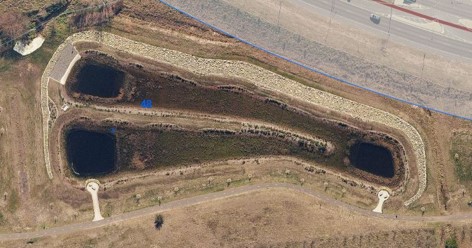
Excellence in Integrated Stormwater Design – Highly Commended
Design for integrated stormwater and remediation of degraded Sydney Water asset resolving differing stakeholder requirements through collaboration to deliver multiple significant benefits and facilitate industrial infill development at Chullora NSW
Costin Roe Consulting
The principles of Water-Sensitive Urban Design (WSUD) guided engineering by Costin Roe Consulting to design the remediation and upgrading of a section of the upper Cooks River, an asset of Sydney Water, which flows through a flood-affected industrial development at 15-19 Muir Road, Chullora NSW.
For consideration within this project, the 900m overall section of the upper Cooks River was divided into three subsections. The “upper third”, a 220m length of natural channel with vegetated banks, was overgrown, weed-infested, hazardous to access, and filled with rubbish and debris which impeded flow conveyance. The 320m “middle third” comprised a concrete-lined and brick-walled channel with failing walls and crossings, and steep banks overgrown with vegetation. The “lower third” consisted of covered culverts for 360m, followed by open channel of concrete and brick for a further 320m.
An infill development proposed for the site would replace a disused, dilapidated, and contaminated former waste transfer centre with a state-of-the-art, 5 Star Green Star rated facility where more than 200 people would be employed. To facilitate this development, Frasers Property Australia, the developers, appointed Costin Roe Consulting to design the remediation and upgrading of the upper Cooks River section to the satisfaction of key stakeholders with differing requirements.
Key stakeholders are Sydney Water, the NSW Office of Water, the City of Canterbury Bankstown Council, and Frasers Property Australia. The NSW Office of Water advocated for a naturalised system but was not responsible for maintenance. Sydney Water sought a hard-engineered system for maintenance minimisation. Council required WSUD principles in asset management, and Council and Sydney Water required the overland flow and flooding considerations associated with the site to be managed so that development would not increase identified flood impacts.
Through collaboration with stakeholders, Costin Roe Consulting devised an integrated solution which achieved stakeholder consensus by balancing differing stakeholder requirements with environmental imperatives, sustainable practicalities, and engineering best practice to deliver favourable outcomes.
According to the design by Costin Roe Consulting, the upper third subsection of the upper Cooks River was preserved as natural channel and cleared of weeds, rubbish, and debris. Banks were stabilised and revegetated with native plants. Maintenance access was provided. Flow conveyance was improved.
The middle third, formerly consisting of outdated and deteriorated open hard channel through the site, was upgraded by a combination of new hard channel and naturalised vegetated overbank overflow zones. This approach satisfied both the NSW Office of Water requirement for naturalisation and the Sydney Water requirement for maintenance minimisation.
The covered culverts of the lower third were extended, and flood storage zones increased. A formalised overland flow path was effectively established from the open channel through the project to Muir Road.
Flood modelling by Costin Roe Consulting, using methodologies approved by Council, demonstrated that flood impacts would be maintained or improved by the project. The completed development provides a range of significant benefits to the community and environment. The potential for further development was improved, and the asset was remediated and upgraded at the developer’s expense.
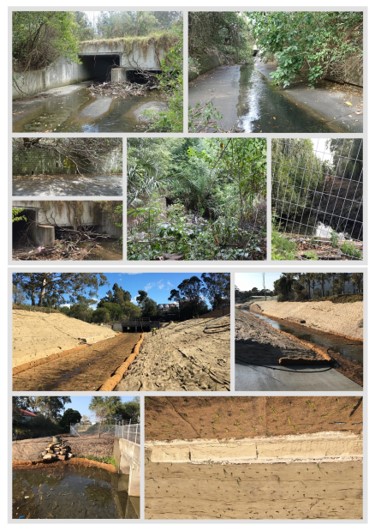
Excellence in Integrated Stormwater Design – Winner
Victoria Park Improvements – Stormwater Treatment Systems in Lake Northam
Alluvium Consulting, City of Sydney, JPW, Warren Smith and Partners
Stormwater treatment systems have been constructed at Victoria Park, with their objectives being to improve the water quality of Lake Northam and downstream drainage runoff into Blackwattle Bay. Lake Northam is an historical, constructed waterbody that plays an ornamental role within Victoria Park. It is a high profile waterbody given its proximity to Parramatta Road and The University of Sydney. It has suffered periodic algal blooms due to low turnover of water and has poor water quality due to the surrounding high-use road catchments and had a significant build up of sediment on its base.
To improve water quality of the lake (and downstream Blackwattle Bay) two treatment systems were designed to treat stormwater runoff from the local catchment during rainfall events, and a pumped recirculation system improves the water quality within Lake Northam during dry weather periods.
The two separate treatment systems have been constructed at the southern and western ends of the lake, which in summary include:
Southern System – treatment train comprising a GPT, low flow diversion into a vegetated wetland (constructed within the lake) and pump pit that continuously recirculates flows through the wetland to polish water prior to entering the main lake waterbody
Western System – treatment train comprising a GPT, low flow diversion into a bioretention system (constructed on the lake edge). The pump pit intermittently pumps additional flows to the bioretention system.The stormwater treatment and recirculation system were accompanied by landscape upgrades to Lake Northam and surrounds. Lighting and pathways were upgraded to refresh the park and improve amenity, and additional seating and activity nodes rounded out park upgrades. This project also has the potential for stormwater harvesting to be incorporated at a later date to supplement mains water for irrigation of Victoria Park.
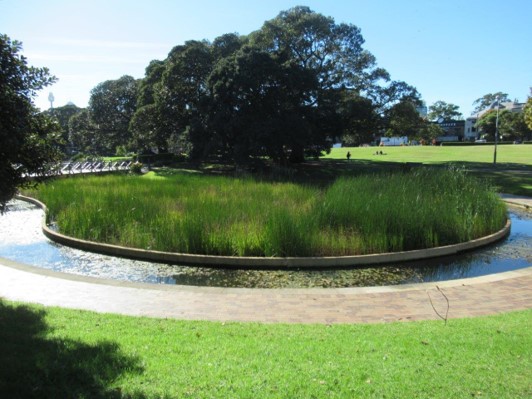
Young Professional of the Year
Simon Pearsall, Sydney Water




